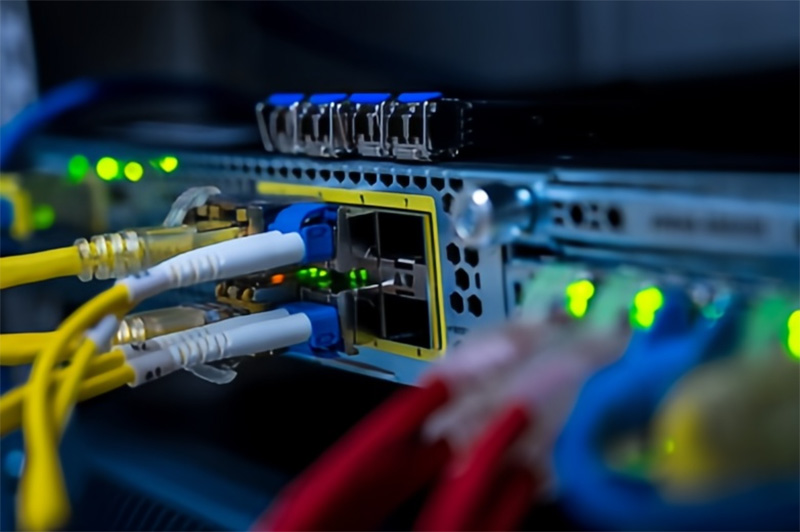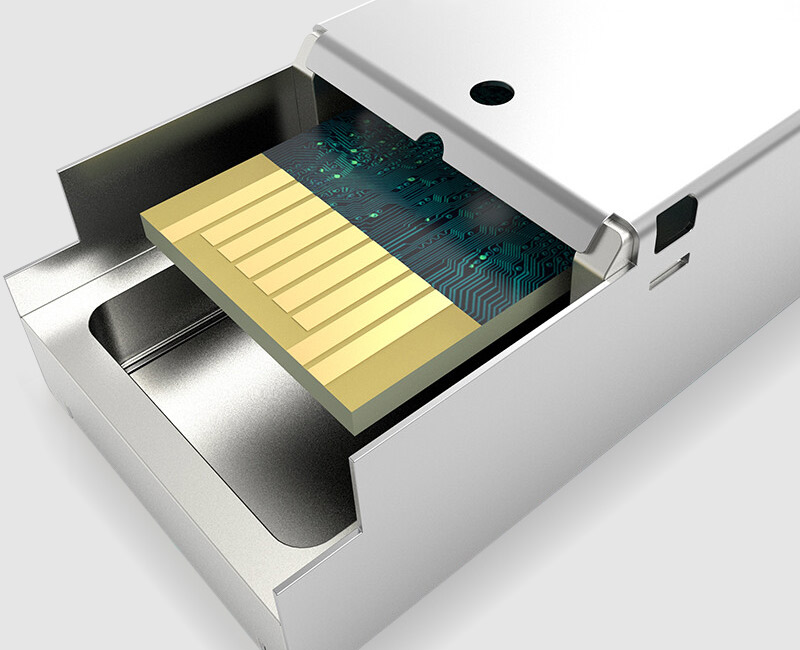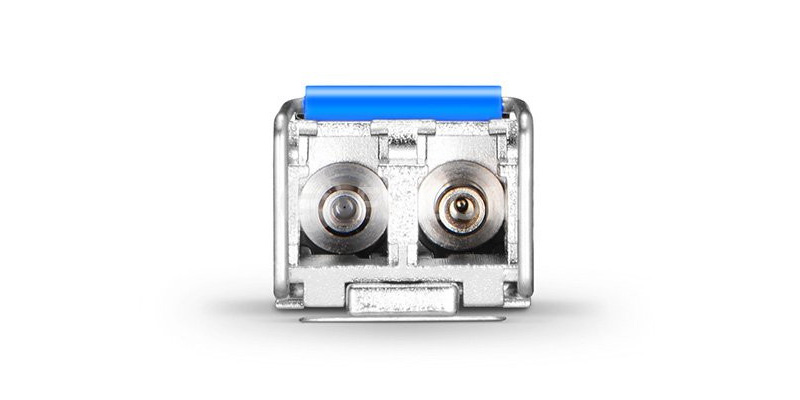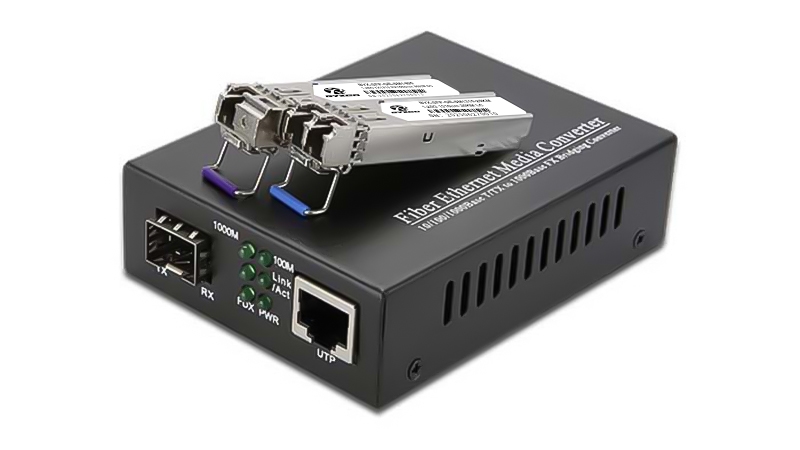Unlock Juniper SFP Compatibility: Pro Tips for Selection and Troubleshooting

Are you experiencing network outages caused by incompatible Juniper SFP modules? It can be difficult to make the right choice regarding any SFP, but knowing the insider information on compatibility for Juniper SFPs will help provide more reliable connections and fewer connection failures. This guide will provide expert tips on how to select, troubleshoot, and maintain your Juniper-compatible SFPs. You’ll become even more confident about how to improve performance and reliability in the network you manage!
Understanding Juniper SFP Compatibility and Its Impact on Network Performance
To ensure a reliable network, it is important to ensure Juniper SFP compatibility. Using Juniper SFP modules that are incompatible can create repeated link drops, reduced throughput, or total loss of communication. It’s similar to using a puzzle with the wrong piece; it will not fit and cause disruption in the entire puzzle.
Common issues are firmware issues, hardware issues, or use of an unsupported third-party module. This can lead to an inconsistent and unreliable link, causing random and unpredictable outages and additional latency, causing a slower operating network.
When you use Juniper compatible SFP modules that are appropriate for the devices, you will reduce the likelihood of experiencing these issues. Compatible Juniper SFPs will allow for uninhibited flow of data, consistent integrity of the signal, and lower error rates, all of which are critical for service uptime.
Considering compatibility is not only for how the device operates in that use case but for the longevity of the health of the whole network. On some level, understanding proper use and consideration toward the SFP module will provide stability and help the network stay operationally efficient in higher bandwidth situations than the demand it was created for.
Overview of Juniper SFP Types and Their Applications
Juniper Networks has a wide range of SFP modules available depending on your network needs. The main types of SFP modules from Juniper are 1G SFP, 10G SR, 10G LR, and 10G ER modules. Each module type supports a specific application in a unique way, and performance characteristics also influence where and how they will be deployed.
1G SFP modules typically support a Gigabit Ethernet network speed and are usually used for access layer connections or in legacy systems. 1G SFP modules are a reliable, economical option with a typical reach of 550m or less when deployed dynamically, supporting regular network traffic.
10G SR (short reach) modules operate at 10 Gigabit speeds and will be deployed over shorter distances, usually in a data center or campus environment. 10G SR modules utilize multi-mode fiber, and the typical fiber distance is nominally 300m. SR modules deploy well when linking servers to switches and switches to switches, and in situations local to areas deployed in the same fiber segment.
10G LR (long reach) modules support the same 10 Gigabit transmission over single-mode fiber across a distance of up to 10 km. It is not uncommon for these optical modules to be implemented in metro networks or campus interconnects where data must traverse multiple buildings or areas.
10G ER (extended reach) modules are capable of distances of up to 40 kilometers over single-mode fiber. An ER network module is a good choice when implementing a network at a WAN facility or large-scale backbone sector where ultra-long transmission distances are expected.
The performance implications across types of Juniper SFPs, influenced by power usage, wavelength, and tolerance for temperature variability, may affect the design of a network. For example, SR modules typically generate less heat and power than ER modules and may be a consideration when cooling and budgeting the use of network power resources.
Making the proper choice between Juniper SFP modules means understanding what module type supports a desired set of application parameters (programming). Mapping module types and specific application needs to fiber infrastructure and performance demands is important to make efficient networks that support speed and signal quality requirements.
Being familiar with overall differences between types of Juniper SFPs and their reasonably typical use cases provides a grounding in the potential for planning network designs that contain flexibility, high performance, and targets for current deployment (i.e., network needed now) and growth opportunities for services or to incorporate more L2 and L3 client services in the future.

Navigating the Juniper SFP Compatibility Matrix: How to Choose the Right Module
The official device and software compatibility matrix by Juniper provides information on what SFP modules work with particular devices and software versions. If you think of it like a map that shows you the possible pairings of a device with a module, compatibility will definitely be guaranteed for optimal network performance.
The matrix is organized by device model, firmware or software version, and supported module types. Each device carries the Juniper part numbers of the supported compatible SFP modules with specific information and specifications denoting if there are any exceptions or special requirements.
This organization makes it easy and straightforward to identify which SFP to deploy for each device.
In your sequence of events to successfully deploy a module, first locate your device model. Then verify the version of the device it is running, whether it be firmware or the Junos OS version, as sometimes specific software releases will contribute to the device’s compatibility status. Finally, cross-reference the device to identify the supported modules referencing the hardware and software information.
Pay special attention to any notes within the matrix that relate to restrictions or exceptions to using a particular module. Some modules will require a minimum firmware version or some other requirement to officially work with your device.
It is our advice to correctly utilize the compatibility matrix to avoid circumstances that commonly create issues such as deploying unsupported, or only partially supported, modules, which will create hardware error status or link drops. Using the matrix also assists with planning firmware upgrades to a device to introduce maximum module compatibility during operation.
This process will provide network administrators with the ability to deploy the exact Juniper SFP module, allowing network administrators to guarantee the link quality without unforeseen downtime.
Overall, the matrix is supposed to work like a rulebook, that when followed, guarantees a perfect fit with every module, and every possibility that exists in the network’s practical architecture challenges, while optimizing connectivity and reliability across the board for all Juniper devices.

Common Compatibility Issues and How to Troubleshoot Them
Many users of Juniper SFP have experienced sporadic and chronic issues including module rejection, link flapping, and throughput degradation. All of these issues can be attributed to an incompatibility between the SFP module and the actual device or the firmware version, which leads to an unwanted interruption of the network’s stability.
Module rejection occurs when the switch does not recognize that the SFP is installed. The reason may relate to original equipment manufacturer (OEM) or third-party SFPs, improper firmware, or problems with the SFP module (i.e., a bad SFP). Additionally, the device may show errors in the logs such as “unsupported transceiver” or “module not detected.”
Link flapping is the rapid up-and-down cycling of connectivity. Link flapping typically comes from considerations relating to signal integrity or configuration issues mismatching between the two devices. The performance implications cause intermittent data spikes, a degraded user experience, and an increase in errors regarding configurations.
Throughput degradation can happen when SFP modules perform below established thresholds. This event can happen when settings are not matching, and often returns to aging hardware. Devices may drop from full duplex to half-duplex, or in extreme circumstances, devices may become very slow or even go down. This, of course, has an impact on users but, over time, can ripple into service degradation.
In terms of troubleshooting, checking the SFP in the official compatibility matrix should be the first step. Next, prepare to check the installed firmware and verify that it supports the SFP module. Outdated firmware is often the cause of SFP compatibility errors.
Most further steps for diagnosing SFP modules should include physically looking at the modules themselves. It is always best practice to ensure clean connectors and make sure the modules are seated correctly. In some cases, the device will go to diagnostic commands (show interfaces diagnostics optics) that will allow an individual to actually see the signal strength, error counts, and the general health of the SFP module.
If third-party modules are utilized, be sure to verify and test the vendor certification before starting and even verify the SFP behavior under controlled conditions before widespread testing. Also, note that many times, simply upgrading the firmware or getting OEM modules can correctly solve SFP incompatibility issues.
Lastly, developing an organized and systematic approach to the diagnosis process itself will produce the most time-effective SFP issue identification and mitigate issues further along. Understanding the need for diagnostic options, configuration checks, hardware verification, and performing software verification checks will keep SFP-related issues from impacting network performance.
Performance Testing of OEM vs Third-Party Juniper-Compatible SFP Modules
Independent laboratory testing has uncovered important distinctions between code OEM and long-term third-party compatible Juniper SFP modules. The lab testing examined core performance factors such as signal integrity, error rates, recognition speed, and power consumption, providing evidence of a performance difference in a real-world network context.
Signal integrity is key to the successful transmission of data. OEM Juniper SFP modules tested showed consistently stable and clean optical signals with almost no noise. The third-party compatible SFP modules in the study had some instances of signal noise, which could result in data corruption at longer distances.
When examining error rate metrics, the modules tested from OEMs showed essentially a 0% bit error rate under performance loads, supporting reliable network performance. The aftermarket SFP modules had occasional small error spikes that, while small, would consistently be more error-prone, affecting data quality if run over prolonged timeframes.
Recognition speed refers to when a switch recognizes and activates an SFP module, and OEM products generally favored performance in this aspect. The OEM modules logged in within a second or so, providing a quick transition when failover or reconfiguring the network speed was necessary. In contrast, some of the third-party SFP modules took 20–30 seconds to be recognized (potentially resulting in a lost connection depending on how the network is configured).
Power consumption is also relevant. The OEM modules consistently had lower power consumption and less heat output than the third-party SFPs, which, depending on the vendor, have been shown to consume even more power than advertised.
While several (not all) reliable third-party compatible Juniper SFP test modules performed similarly to OEM modules, in general, there is usually some trade-off when using third-party modules regarding reliability and performance compared to OEM performance metrics.
These lab test results can assist network managers in deciding which SFP modules are best within their budget, without compromising long-term performance, uptime, or data integrity. The tests assist in full-spectrum evaluation, helping to ensure that networks stay up and that the data transmitted is reliable.

Successful Deployment of Juniper Compatible SFP Modules in an Enterprise Network
A large organization experienced frequent network outages and spontaneous link errors caused by incompatible SFP modules. The IT management team instituted a deliberate selection process focused on Juniper SFP compatibility to improve the overall performance of the network.
The IT management team referenced the official compatibility matrix; test modules were selected based on device compatibility and firmware type. Additionally, pilot tests were completed to verify that the chosen module had a reliable signal with acceptable error rates before going into production. Each of these actions mitigated the effects of deployed incompatible SFPs and avoided potentially expensive rollbacks.
The production deployment included additional challenges, such as switching the switch firmware to accommodate the selection of SFPs and retraining of technicians and staff to handle the SFP modules. However, with all of these efforts, the organization realized a remarkable improvement in network uptime and at least a 30% reduction in outages.
After deployment, monitoring of the SFP modules confirmed the results of these efforts with robust links, improved time-to-recognition, and almost no error rate while monitoring throughput. The organization now has observable performance enhancements without incurring significantly more cost, demonstrating that effective compatibility management is valuable to the organization.
This case illustrates how the combination of compatibility information and testing for proactive reliability led to efficient, resilient Juniper network performance, ultimately reducing unplanned downtimes and maximizing the return on investment.
Best Practices for Managing Juniper SFP Compatibility in Large Scale Networks
Proper management of compatibility for Juniper SFP begins with basic inventory management. Keeping track of each SFP module’s model, serial number, firmware version, and where it was deployed helps with installing the proper SFP values in the proper devices. If you’re keeping an up-to-date parts list, it will avoid mistakes when assembling a system, and you will know exactly what you have on hand.
Having an up-to-date and complete compatibility record for a module in accordance with the latest from Juniper is also very important. You should check the compatibility matrix from Juniper’s site for the exact module you are using to make sure the module is supported for a firmware update to a device or hardware change (such as moving to a new switch).
Having a scheduled firmware update plan for devices to go along with compatibility standards is a great idea. Remember, firmware is telling your modules how to interact and, therefore, will prompt a compatibility problem when networking with a device that has a different or outdated firmware.
Before deploying modules into a large-scale professional network, consider testing modules in an isolated lab environment. This will replicate your corporate network conditions to help you identify and resolve unknown potential issues before deploying on your organization’s network and will reduce downtime.
Continue and always monitor your network health using diagnostic tools to pick up and identify minor compatibility issues that can make a significant performance impact. Finding issues early on is a great way to diagnose or remediate previously unknown issues while preserving overall network performance and ensuring stability.
Taking steps to improve and document inventory diligence, comprehensive compatibility records, maintenance schedules, proactive testing of modules, and continuous health monitoring will improve the reliability and general measurement of compatibility of commercial networks using Juniper plastics within the complex infrastructure.

FAQs
What are the most common Juniper SFP modules and what are the differences between them?
The most common are the 1G SFP for standard connections, the 10G SR SFP that is designed for use over multi-mode fiber for short distances, and the 10G LR that is designed for longer distance connections over single-mode fiber. The differences between them are speed, distance, and multi-mode vs. single-mode fiber.
How do I know if a third-party SFP is compatible with Juniper?
Check the third-party vendor documentation and follow up with the device compatibility matrix (on the vendor website). Often, compatibility will be noted if the module has been certified or tested in a lab.
Why does my Juniper device indicate the SFP I am inserting is not compatible?
Depending on a few factors, a device may reject the module. The common causes are an unsupported SFP, a firmware incompatibility between the switch and the SFP, or a physical issue with the SFP. An unsupported third-party module is the most common cause of incompatibility with Juniper devices.
How do I upgrade the device firmware on my Juniper device to fix compatibility issues?
Download the firmware from the Juniper website, following the update instructions. Updating the devices often improves the device operation with the SFP. Firmware updates may also fix compatibility issues and improve the device operation with any SFP.
Can I install and leverage different SFP types on the same Juniper switch?
If the devices support module types, often it is possible to insert different types of SFPs in the same switch. However, using multiple types of SFPs/session types can be problematic, so verify compatibility prior to deployment.
What is the most common cause of intermittent connectivity or link drops?
Common issues with intermittent connectivity and link drops include a dirty or damaged connector on your fiber optic cable, firmware conflicts between the switch and SFP, or the use of a module that is incompatible with the switch. Any of these three scenarios will cause a link to fail to connect properly (or maintain a solid connection).
How do I read and understand the Juniper switch diagnostic messages for SFPs?
Issue diagnostic commands (like “show interfaces diagnostics optics”) to check the downlink status, receive optical power, and monitor for errors. Generic messages like “module failure” or “link down” indicate the device may be incompatible or that there is a hardware issue.
What is the difference between the Juniper SFP 10G LR and 10G SR?
The 10G LR modules are designed to operate at longer distances (up to 10 km) and leverage single-mode fiber, while 10G SR modules are designed for use over multi-mode fiber with shorter distances (up to 300 m).
When should I replace an SFP module in a Juniper network?
Replace an SFP module for persistent errors with signal quality or signal strength, when there is an ongoing failure with the SFP, or after all troubleshooting has been exhausted (applying an updated firmware, checking connections, etc.).
Some Juniper compatibility matrices are tailored for the use of a specific type of SFP (for that specific module/part number), and reading this document will help you identify a replacement option (while also verifying compatibility).
How do I best utilize the Juniper compatibility matrix?
The compatibility matrix is used to match a switch model type and firmware version with a set of supported part numbers (SFPs). It is best practice to review the compatibility matrix posted on the vendor’s website prior to making a purchase or planning a firmware upgrade on the switch. This gives you reasonable assurance that any SFP you want to install is optimally compatible with the switch or system (for that specific firmware version).
Conclusions
Managing Juniper SFP compatibility effectively is crucial to maintaining an effective and reliable network. Understanding how to use the compatibility matrix will enable you to select an SFP line that is optimized for your device and firmware. This will mitigate the effects of downtime or performance degradation you may see from module incompatibility until you can install a proper replacement or perform equipment upgrades.
Additionally, continuing to learn about the newly evolving standards regarding compatibility, while being proactive with inventory management and firmware management, will further protect your network’s health and operation. You can also leverage more expert advice to ensure your decisions are optimal in integrating new SFPs into your network and can validate some decisions you made personally or independently.
Implementing any or all of these methods will be essential to converting SFP management from a hassle into a competitive advantage in your organization. You will begin to have confidence that you have established your network to provide reliable connections, as needed, while continuing to provide support for future growth to accommodate the goals of your organization.
